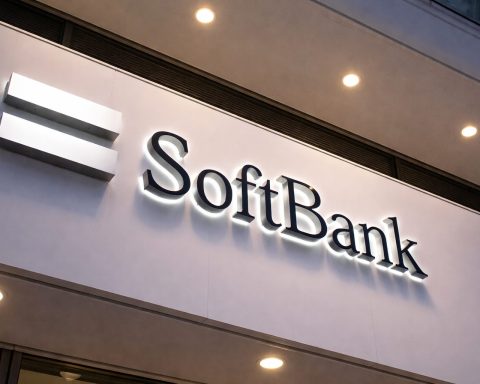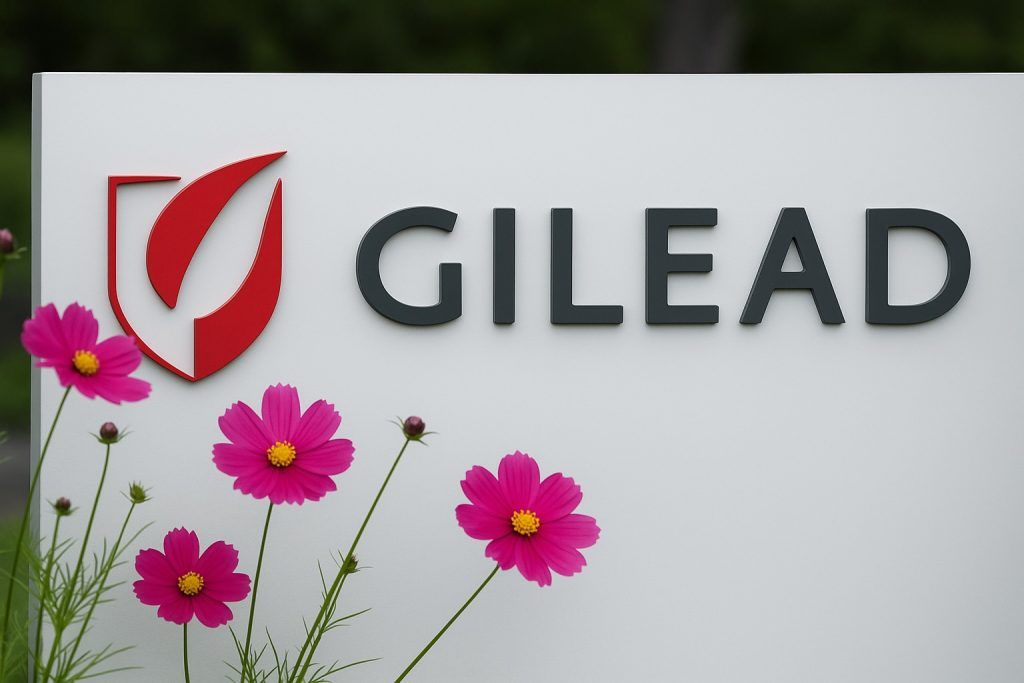Key Facts – October 18, 2025
- Stock Hits New High: Mind Medicine (MindMed) Inc. (NASDAQ: MNMD) surged to a 52-week high this week, touching $13.09 on Oct. 14 and soaring further to close at $13.65 on Oct. 17 – a +14.6% jump in one day [1]. Shares are up about 68% year-to-date amid heavy trading volume and investor optimism [2].
- Breakthrough Drug Success: MindMed’s lead candidate MM120 (a proprietary LSD-based therapy) delivered groundbreaking Phase 2b trial results for Generalized Anxiety Disorder (GAD), with a single dose yielding rapid, robust anxiety relief sustained 12 weeks – 48% of patients went into remission, 65% responded [3]. The FDA granted Breakthrough Therapy designation to MM120 for GAD, speeding its development [4]. Three Phase 3 trials are now underway, aiming for pivotal data in 2026 [5].
- Analysts See Big Upside: Wall Street is growing bullish. Needham & Co. just initiated coverage (Oct. 13) with a Buy rating and $28 price target, calling MM120 “the most advanced psychedelic in development for GAD” [6]. Overall, 6 out of 7 analysts rate MindMed a Buy, with an average price target near $27.8 – more than double the recent share price [7]. High institutional ownership in MNMD “speaks for itself” as the stock’s momentum builds [8].
- Pipeline & Cash Runway: Beyond MM120, MindMed is advancing MM402 (an MDMA-derived drug) in Phase 1 trials for autism spectrum disorder [9]. The company is well-capitalized with $237.9 million in cash and investments (as of mid-2025), enough to fund operations into 2027 [10]. This strong cash position limits dilution risk and supports ongoing R&D and potential partnerships.
- Psychedelics Boom Resurfaces: MindMed’s rise comes amid renewed momentum in psychedelic medicine. In August, pharma giant AbbVie bet $1.2 billion to acquire a psychedelic-based depression therapy [11]. Peers have mixed fortunes – Compass Pathways just hit a Phase 3 success with psilocybin for depression, while another firm’s MDMA-like PTSD drug was rejected by the FDA [12]. MindMed’s rigorous trials and positive data have positioned it as a front-runner in the psychedelics race, as the field moves from fringe to mainstream [13].
MNMD Stock Rallies to New Highs on Heavy Volume
MindMed’s stock has been on fire, vastly outperforming the broader market in recent weeks. Shares rocketed to a 52-week high of $13.09 on October 14, closing that day at $12.58 on unusually heavy volume [14]. After a brief mid-week pullback on profit-taking (shares dipped ~4% intraday on Oct. 16) [15], MNMD roared back by week’s end – closing at $13.65 on Friday, Oct. 17, a one-day gain of +14.6% [16]. This rally has propelled MindMed to roughly +68% YTD returns [17], a remarkable run fueled by excitement over the company’s clinical progress.
Investor sentiment is clearly bullish. The recent surge has been supported by a string of positive news (detailed below) and a broader risk-on mood in biotech. Notably, MindMed boasts a high base of institutional investors – a Simply Wall St analysis via Yahoo Finance highlighted the “high institutional ownership” as a sign of confidence during the stock’s 25%+ spike in late September [18]. Retail traders have also piled in, encouraged by momentum and the promise of psychedelic therapies to transform mental health treatment.
Volatility remains high (typical for clinical-stage biotechs), but optimism prevails. Even MindMed’s CEO took some chips off the table – Robert Barrow sold ~25,800 shares around $9.77 in late September [19] – yet the stock barely blinked. “Overall sentiment remains positive as the company heads toward major catalysts in 2026,” wrote one analyst [20]. In short, MNMD’s trajectory has been decisively upward, with investors betting that recent progress is only the beginning.
Breakthrough LSD Therapy Drives Hopes for FDA Approval
At the heart of MindMed’s surge is growing excitement around MM120, its lead drug candidate. MM120 is a pharmaceutically optimized form of LSD (lysergic acid diethylamide) being developed as a novel therapy for anxiety disorders. While LSD is infamous as a psychedelic, MindMed aims to repurpose it into a rigorously tested medicine – and early results suggest it could be a game-changer for Generalized Anxiety Disorder (GAD).
In a Phase 2b trial of 198 GAD patients, a one-time 100 µg oral dose of MM120 delivered striking results. By Week 4, patients receiving MM120 saw significantly greater reductions in anxiety scores versus placebo [21]. Impressively, at Week 12 (three months post-dose), benefits persisted: MM120 patients had a 7.7-point greater drop in anxiety (HAM-A scale) than placebo [22]. In clinical terms, 48% of MM120-treated patients went into remission by week 12, compared to far fewer on placebo [23]. About 65% of MM120 patients achieved at least a 50% reduction in anxiety symptoms, with these gains “solidly sustained for 12 weeks after a single dose,” according to trial investigator Dr. David Feifel [24]. “That MM120 exhibited rapid and robust efficacy, solidly sustained for 12 weeks after a single dose, is truly remarkable,” Dr. Feifel noted, underscoring the excitement around the data [25].
These eye-opening results were published in the Journal of the American Medical Association (JAMA) in September and caught regulators’ attention [26]. The FDA granted Breakthrough Therapy designation to MM120 for GAD – a coveted status for drugs showing substantial improvement over existing treatments [27]. This designation, which speeds up development and review, was “further validation of the important potential role this treatment can play” for patients, MindMed CEO Robert Barrow said [28].
Buoyed by the Phase 2 success and FDA green light, MindMed has wasted no time: it launched three Phase 3 trials of MM120 (using a convenient orally-dissolving tablet form) across anxiety and mood disorders [29]. Two large trials – dubbed Voyage and Panorama – are enrolling GAD patients, while a third trial (Emerge) is testing MM120 in major depressive disorder (MDD) [30]. The company expects top-line Phase 3 results in 2026: data from Voyage in the first half, Panorama in the second half, and an initial readout from Emerge by late 2026 [31]. If those pivotal studies replicate the Phase 2’s efficacy and safety, MindMed could be on track to file for FDA approval in 2027 [32] – potentially bringing the first new anxiety disorder medication in decades to market, and notably the first psychedelic-based therapy approved for a mainstream mental health condition.
MindMed’s approach has drawn praise for its scientific rigor. Notably, the Phase 2 trial evaluated MM120 without any accompanying psychotherapy, isolating the drug’s effect [33]. It also included a very low “active placebo” dose to maintain blinding (so participants wouldn’t immediately know if they got a hallucinogenic dose or not), following FDA’s guidance for psychedelic trials [34]. These design choices – using proper control doses and focusing on drug effect alone – set MindMed apart. Some competitors have faltered by not fully blinding trials or by relying on therapy support, which muddied their data and drew FDA criticism. In fact, when another company (Lykos Therapeutics) saw its MDMA-like drug for PTSD rejected by the FDA last year over trial design issues, MindMed’s team took it as validation of their own methods [35]. “Everything the FDA said they needed to see from Lykos are things we baked into our program from the outset… Lykos’ difficulties have been nothing but validation for how we’re doing this,” Dr. Dan Karlin, MindMed’s Chief Medical Officer, told PharmaVoice [36] [37]. By learning from others’ setbacks and “doing things by the book,” MindMed is striving to ensure its late-stage data will be clear and compelling for regulators [38].
Wall Street Analysts Bullish on “Psychedelic Prozac” Potential
The buzz around MindMed isn’t just retail hype – Wall Street analysts and industry experts are increasingly optimistic about the company’s prospects.
Needham & Co. became the latest firm to join the bull camp. On October 13, Needham initiated coverage on MindMed with a Buy rating and a $28 price target [39]. Analyst Ami Fadia at Needham highlighted that MM120 is “the most advanced psychedelic in development for GAD,” noting the Phase 2 data showed a “significant improvement in efficacy and durability over [standard] treatments” [40] [41]. She projects MM120 could achieve over $1.5 billion in annual U.S. sales by 2035 if approved [42]. Importantly, MindMed is targeting two large indications – anxiety and depression – that together represent a $12+ billion market opportunity, implying huge revenue potential if Phase 3 trials succeed [43].
Needham isn’t alone. Oppenheimer in August reiterated an Outperform rating with a $25 target, and Chardan Capital in early October upheld a Buy with a $20 target [44]. Even the rare cautious voices haven’t dampened enthusiasm – for example, one independent ratings firm recently labeled MindMed a Sell, but the stock “barely blinked” [45] as bullish sentiment prevailed.
Overall, analysts now cover MindMed with 6 Buys vs just 1 Sell, yielding a consensus Moderate Buy rating [46]. MarketBeat reports the average price target is ~$27.83, implying nearly +120% upside from current levels [47]. In other words, Wall Street sees significant room for further gains if MindMed executes well. “One investment analyst has rated the stock a Strong Buy, six have issued a Buy… with an average target of $27.83,” MarketBeat noted, underlining the bullish outlook [48]. As another analyst put it, MindMed’s strong data and late-stage pipeline have it “nearing a pivotal year”, and investors are taking notice [49].
Industry experts echo the optimism. In psychiatric circles, there’s growing intrigue about psychedelic therapies. Dr. David Feifel’s enthusiastic comments (above) reflect a wider excitement that MM120 could become the first new class of anti-anxiety medication in decades, should Phase 3 confirm the benefits [50]. Regulators, too, have signaled openness – the FDA’s Breakthrough designation is a clear sign that experts see a strong signal in MindMed’s data [51]. PharmaVoice recently spotlighted MindMed as a leader “inching closer to regulatory review with its optimized LSD,” noting that setbacks for others have only reinforced MindMed’s approach [52]. The article positioned MindMed as a front-runner in the psychedelics race as it enters Phase 3, while some rivals stumble [53].
Pipeline Expands and Cash Cushion Eases Concerns
MindMed’s ambitions extend beyond MM120. The company is also developing MM402, an R(-)MDMA derivative (related to the active ingredient in ecstasy) aimed at autism spectrum disorder social anxiety. MM402 is currently in a Phase 1 clinical trial, representing a second innovative program in MindMed’s pipeline [54]. While early-stage, this illustrates MindMed’s strategy to build a portfolio of novel neuropsychiatric therapies – both with and without psychedelic effects – targeting major brain health disorders.
Financially, MindMed is on solid footing for a company at its stage. As of June 30, 2025, it held $237.9 million in cash and investments [55]. According to Needham’s analysis, that war chest is sufficient to fund operations through 2027, at least 12 months past the first Phase 3 data readout for MM120 [56]. In practical terms, MindMed should be able to complete its Phase 3 programs without needing to raise additional capital – a relief to investors wary of dilution. “The company’s cash… is sufficient to fund operations into 2027,” Benzinga noted, which “limits the need for dilutive financing” while supporting ongoing R&D [57].
MindMed’s robust balance sheet also positions it to negotiate from strength if partnership or M&A opportunities arise. To date, management has not announced any deals with large pharma, but some analysts speculate that if MM120’s Phase 3 trials succeed, bigger players could come knocking [58] given the multi-billion-dollar market potential. For now, MindMed appears content to forge ahead independently, confident in its ability to reach the finish line. The next check-in on finances and progress will come with Q3 2025 earnings, due November 6, 2025, where investors will watch for updates on trial enrollment and R&D spending [59]. (As a pre-revenue biotech, quarterly “earnings” are more about cash burn and scientific milestones than revenue.) Any new tidbits – positive or negative – from these updates can move the stock, as sentiment is highly tied to the pipeline’s perceived health.
Psychedelic Biotech Revival: Industry Context Boosts MindMed
MindMed’s rise is part of a broader resurgence in the psychedelic medicine industry, which is shaking off a post-hype hangover and inching toward mainstream validation. A few years ago, dozens of psychedelic startups launched amid fanfare, only to struggle through scientific and funding challenges. Now, the field is maturing, and leaders like MindMed are separating from the pack with well-designed trials and tangible results.
A watershed moment came this summer: in August 2025, AbbVie – one of the world’s largest pharmaceutical firms – agreed to pay up to $1.2 billion to acquire an experimental psychedelic-derived drug for depression [60]. The drug (called bretisilocin, developed by Gilgamesh Pharmaceuticals) showed an astounding 94% remission rate in a Phase 2 depression trial, convincing AbbVie to make a big bet [61]. This landmark deal “soundly arrived [psychedelic therapeutics] in the mainstream,” observed BioSpace [62], signaling that Big Pharma now sees commercial promise in psychedelics. MindMed’s own market cap neared $1 billion during its recent rally [63], reflecting expectations that it could be among the first to get a psychedelic drug approved – and perhaps an acquisition target itself down the road.
Regulators have also become more engaged. The FDA, while cautious, has shown willingness to advance psychedelic therapies when the data justify it. Several programs now hold Breakthrough Therapy status – including MindMed’s MM120 for GAD [64], MAPS’ MDMA for PTSD, and Compass Pathways’ psilocybin for depression – something unimaginable a few years ago. This special designation accelerates trials and review, indicating that regulators acknowledge the urgent need for new mental health treatments and are encouraged by early results.
The psychedelic space has seen both successes and setbacks recently, underscoring the high-risk, high-reward nature of this frontier. On the positive side, UK-based Compass Pathways announced that its Phase 3 trial of a psilocybin therapy for depression met its primary endpoint, showing meaningful efficacy [65]. Compass is now planning an additional confirmatory trial, but its win is a proof-of-concept that psychedelic drugs can pass Phase 3 and move closer to approval. In contrast, Lykos Therapeutics faced a high-profile failure: the FDA declined to approve its MDMA-like PTSD drug in late 2024, citing concerns about trial conduct and “functional unblinding” (patients guessing they got the real drug) [66]. This setback highlighted why rigorous trial design – controlling expectations and placebo effects – is so critical. MindMed notably took these lessons to heart in crafting its own trials (as discussed earlier), which may give it an edge where others stumbled.
Investor sentiment toward the sector has turned more discerning. After a speculative boom and bust in 2020–2023, 2025 has brought a rebound for the best-positioned companies. Many investors are now differentiating leaders from laggards rather than trading the sector as a monolith. MindMed’s strong run – roughly +70% YTD – and its ample funding have made it a top pick for exposure to the theme. Other peers like Atai Life Sciences, Cybin, and Compass remain in focus as their clinical programs progress. There’s even talk of consolidation, with smaller cash-strapped players potentially merging or getting acquired if they have promising assets [67]. As MindMed edges closer to a potential finish line, the broader psychedelic industry is moving from speculative promise to what looks increasingly like an achievable reality.
Outlook: Pivotal Year Ahead – Promise and Perils
Looking ahead, the next 12–18 months will be critical for MindMed. 2026 is shaping up to be a pivotal year, with three Phase 3 readouts expected for MM120 across anxiety and depression indications [68]. Success in these trials could enable MindMed to seek FDA approval in 2027, which would be transformative – for patients (as the first new anxiety treatment in decades), for the company’s fortunes, and for validation of psychedelic medicine at large [69] [70]. “The space has promised a breakthrough for mental health… and so far has yet to deliver – but MindMed’s approach is barreling toward the finish line,” one industry observer remarked, reflecting cautious optimism that this time might be different [71].
In the near term, investors will be watching incremental updates. MindMed’s upcoming Q3 2025 report on Nov. 6 may provide color on how Phase 3 enrollment is progressing and whether timelines remain on track [72]. Any hints of delays or surprises (good or bad) could sway the stock. The company’s burn rate and cash usage will also be scrutinized, though with ~$238 million on hand, MindMed has a comfortable runway.
Of course, risks abound. Clinical trials are unpredictable – a failed Phase 3 trial or unexpected safety issue could deflate the stock quickly, given how much optimism is baked in [73]. Even if MM120 succeeds, MindMed will eventually face questions on how to commercialize a psychedelic therapy: scaling up access to a treatment that may require supervised dosing sessions, navigating insurance reimbursement for a novel approach, and competing with any rival therapies that reach market around the same time [74]. Potential competitors include Compass’s psilocybin (targeting depression) and MAPS’ MDMA (targeting PTSD), which, while not direct GAD treatments, could overlap in addressing patient needs [75]. MindMed will need to execute not just in the lab, but in the marketplace if approval comes.
For now, though, the outlook leans optimistic. MindMed enters late 2025 with significant momentum: a soaring stock, remarkable clinical data, regulatory tailwinds, and growing endorsement from experts and analysts. The company’s strong fundamentals and late-stage pipeline have positioned it as a leading light in the burgeoning psychedelic therapy field. As one analyst summed up, MindMed is “nearing a pivotal year” [76] – and Wall Street and the biotech community are paying close attention. If the coming year lives up to hopes, MindMed could turn its bold bet on psychedelics into a historic breakthrough for mental health, translating scientific innovation into a stock market success story and, most importantly, new hope for millions of patients.
Sources: MindMed press releases and SEC filings; Yahoo Finance; MarketBeat (Oct. 14, 2025) [77] [78]; AllPennyStocks (Sept. 29, 2025) [79]; TS²/TechStock – MindMed Stock Skyrockets on Psychedelic Breakthroughs (Oct. 18, 2025) [80] [81]; PharmaVoice (Oct. 7, 2025) [82]; Benzinga (Oct. 13, 2025) [83]; Investing.com historical data [84].
References
1. www.investing.com, 2. ts2.tech, 3. ts2.tech, 4. ts2.tech, 5. ts2.tech, 6. ts2.tech, 7. ts2.tech, 8. ts2.tech, 9. ts2.tech, 10. ts2.tech, 11. ts2.tech, 12. ts2.tech, 13. ts2.tech, 14. ts2.tech, 15. ts2.tech, 16. www.investing.com, 17. ts2.tech, 18. ts2.tech, 19. ts2.tech, 20. ts2.tech, 21. ts2.tech, 22. ts2.tech, 23. ts2.tech, 24. ts2.tech, 25. ts2.tech, 26. ts2.tech, 27. ts2.tech, 28. ts2.tech, 29. ts2.tech, 30. ts2.tech, 31. ts2.tech, 32. ts2.tech, 33. ts2.tech, 34. ts2.tech, 35. ts2.tech, 36. ts2.tech, 37. ts2.tech, 38. ts2.tech, 39. ts2.tech, 40. ts2.tech, 41. ts2.tech, 42. ts2.tech, 43. ts2.tech, 44. ts2.tech, 45. ts2.tech, 46. ts2.tech, 47. ts2.tech, 48. ts2.tech, 49. ts2.tech, 50. ts2.tech, 51. ts2.tech, 52. ts2.tech, 53. ts2.tech, 54. ts2.tech, 55. ts2.tech, 56. www.benzinga.com, 57. ts2.tech, 58. ts2.tech, 59. ts2.tech, 60. ts2.tech, 61. ts2.tech, 62. ts2.tech, 63. ts2.tech, 64. ts2.tech, 65. ts2.tech, 66. ts2.tech, 67. ts2.tech, 68. ts2.tech, 69. ts2.tech, 70. ts2.tech, 71. ts2.tech, 72. ts2.tech, 73. ts2.tech, 74. ts2.tech, 75. ts2.tech, 76. ts2.tech, 77. ts2.tech, 78. ts2.tech, 79. ts2.tech, 80. ts2.tech, 81. ts2.tech, 82. ts2.tech, 83. ts2.tech, 84. www.investing.com










